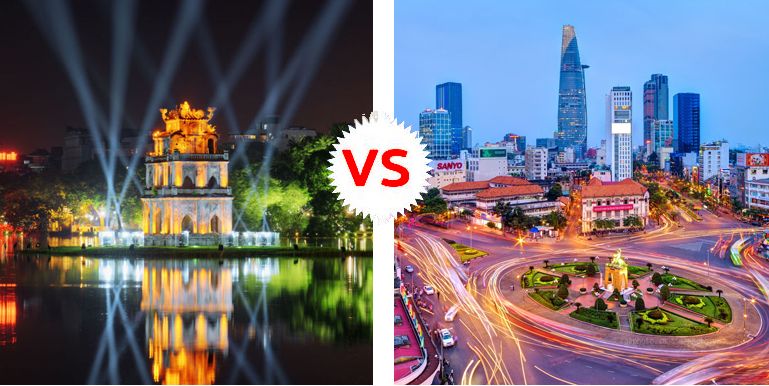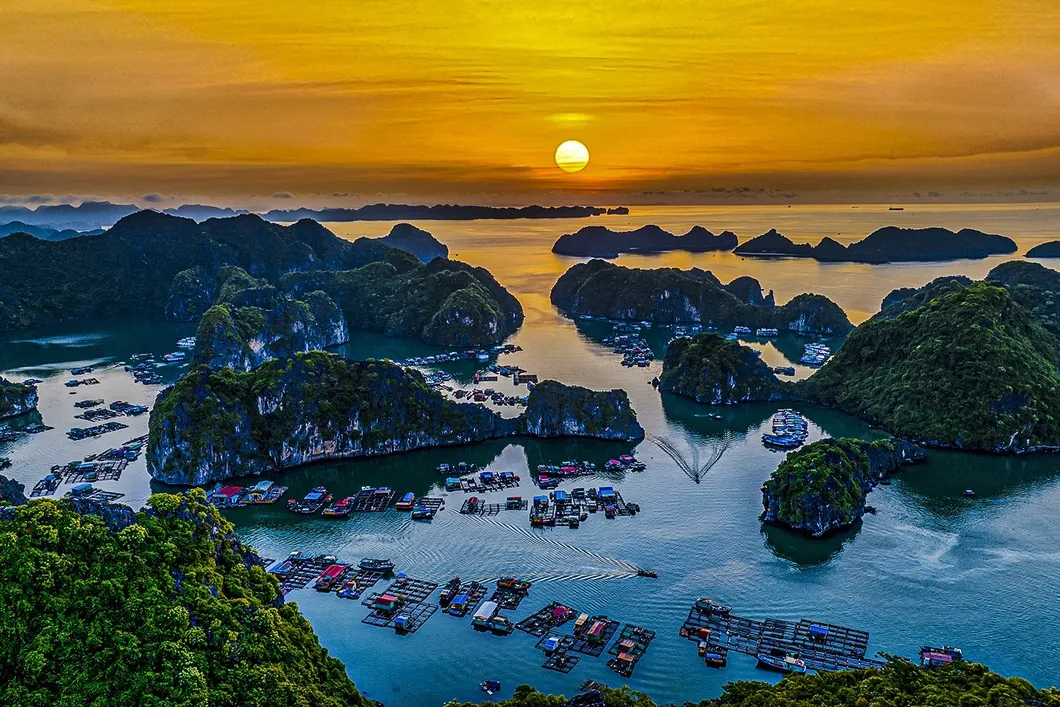
Some reasons for travelers when choosing between Hanoi and Saigon in Vietnam
The difference between Hanoi and Saigon reflects the diversity of culture, history, and lifestyle in Vietnam's two largest cities.
Hanoi: The Historical and Cultural Heart
History and Culture

Hanoi, the capital of Vietnam, is rich in history and culture, tracing its roots back over a thousand years. Established in 1010, Hanoi has been the political and cultural center of Vietnam for centuries. The city's historical significance is palpable, with landmarks such as the Imperial Citadel of Thang Long, a UNESCO World Heritage Site, and the iconic Ho Chi Minh Mausoleum.
The Old Quarter, with its narrow, winding streets, offers a glimpse into the past with traditional shop houses, ancient temples, and bustling markets. Here, the cultural heritage is preserved through the architecture, local crafts, and the everyday lives of its residents. The city is also known for its French colonial architecture, evident in buildings like the Hanoi Opera House and St. Joseph's Cathedral.
Climate and Geography
Hanoi experiences a humid subtropical climate with four distinct seasons. Summers are hot and humid, while winters can be surprisingly cold, with temperatures sometimes dipping below 10°C (50°F). The autumn and spring seasons are particularly pleasant, making these the best times to visit.
Situated in the northern part of Vietnam, Hanoi is surrounded by the Red River Delta, which contributes to its lush green landscapes and agricultural productivity.
Lifestyle and People
Hanoians are often seen as more reserved and traditional. The lifestyle here reflects a slower, more deliberate pace, with a strong emphasis on family values and cultural traditions. Street food culture is vibrant, with iconic dishes such as pho, bun cha, and cha ca (grilled fish). Hanoi's culinary scene is known for its subtle flavors and balanced use of herbs and spices.
Cultural activities abound, with numerous museums, art galleries, and traditional water puppet theaters. The city also hosts various festivals throughout the year, celebrating everything from the lunar new year (Tet) to the Mid-Autumn Festival.
Saigon (Ho Chi Minh City): The Dynamic and Modern Metropolis
History and Culture
Ho Chi Minh City, still commonly referred to as Saigon, is Vietnam's economic powerhouse. Originally a Khmer trading post before being colonized by the French, Saigon has a rich, albeit shorter, history compared to Hanoi. The city played a crucial role during the Vietnam War and is home to many historical sites like the War Remnants Museum, the Reunification Palace, and the Cu Chi Tunnels.
Saigon's culture is a blend of Vietnamese tradition and modern influences. The city's rapid development has led to a juxtaposition of old and new, with ancient pagodas standing alongside modern skyscrapers. The Notre-Dame Cathedral Basilica of Saigon and the Saigon Central Post Office are prime examples of French colonial architecture.
Climate and Geography
Saigon has a tropical climate, characterized by two main seasons: the wet season (May to November) and the dry season (December to April). The temperatures are generally warm year-round, averaging between 25°C to 35°C (77°F to 95°F), with high humidity levels.
Located in the southern part of Vietnam, the city lies along the Saigon River and is part of the Mekong Delta region, which contributes to its rich agricultural hinterland and diverse ecosystem.
Lifestyle and People
Saigon is known for its energetic and fast-paced lifestyle. The city never seems to sleep, with its vibrant nightlife, bustling markets, and constant flow of motorbikes. Saigoneers are typically perceived as more open and business-minded, reflecting the city's role as the economic hub of Vietnam.
The culinary scene in Saigon is diverse and dynamic, offering a wide range of dishes from different regions of Vietnam and beyond. Street food is ubiquitous, with dishes like banh mi, com tam (broken rice), and hu tieu (noodle soup) being local favorites. The city's food is often characterized by bolder and sweeter flavors compared to Hanoi.
Saigon also boasts a thriving arts and entertainment scene, with numerous theaters, live music venues, and modern shopping malls. The city is a melting pot of cultures, attracting a large expatriate community and tourists from around the world.
Comparing Hanoi and Saigon
Economic Influence
Hanoi, as the capital, is the political heart of Vietnam, housing government offices, foreign embassies, and numerous cultural institutions. Its economy is diversified, with a strong emphasis on education, research, and manufacturing.
Saigon, on the other hand, is the financial and commercial center of the country. The city attracts a significant amount of foreign investment and is home to the headquarters of many multinational corporations. The presence of the Ho Chi Minh Stock Exchange highlights its importance in the economic landscape of Vietnam.
Infrastructure and Transportation
Both cities are undergoing rapid development, but Saigon often appears more modern with its extensive network of high-rise buildings and shopping complexes. The transportation infrastructure in Saigon is more developed, with plans for a metro system to alleviate traffic congestion. The Tan Son Nhat International Airport in Saigon is the busiest airport in Vietnam, handling millions of passengers each year.
Hanoi's infrastructure, while also improving, retains more of its historical charm. The Noi Bai International Airport serves as the main gateway to northern Vietnam. The city's public transportation is gradually expanding, with new bus routes and a developing metro system.
Tourism and Attractions
Hanoi attracts tourists with its historical sites, cultural festivals, and traditional Vietnamese experiences. Key attractions include the Temple of Literature, Hoan Kiem Lake, and the Thang Long Water Puppet Theatre.
Saigon draws visitors with its vibrant nightlife, modern attractions, and historical landmarks. The Ben Thanh Market, Bitexco Financial Tower, and various war-related sites provide a diverse range of experiences for tourists.
Conclusion
Choosing between Hanoi and Saigon depends largely on what type of experience a traveler seeks. Hanoi offers a deep dive into Vietnam's historical and cultural roots with its ancient temples, traditional markets, and historical sites. It's ideal for those looking to explore the rich heritage and tranquil beauty of the northern region.
Saigon, in contrast, presents a dynamic and modern urban experience. Its bustling streets, vibrant nightlife, and diverse culinary scene cater to those who thrive in a fast-paced, cosmopolitan environment. Saigon is perfect for travelers who enjoy the hustle and bustle of city life and want to experience the economic heart of Vietnam.
Both cities, with their unique charm and offerings, provide an authentic and enriching experience of Vietnam. Whether you choose the historical allure of Hanoi or the modern vibrancy of Saigon, each city promises an unforgettable journey into the heart of Vietnamese culture and life.